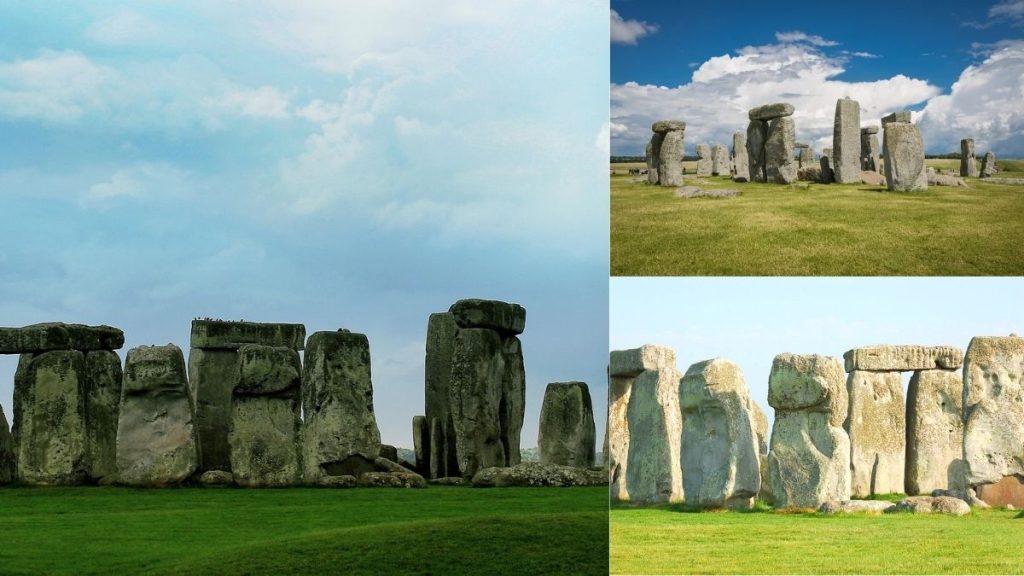Stonehenge, in southern England, is one of the world’s greatest archaeological sites as well as one of its most enigmatic mysteries. Although there is no definitive evidence as to why Stonehenge was built, it was most likely both a sacred site and a statement of the power and wealth of the chieftains, artists, and priests who originally created it, many of whom are buried nearby in the numerous barrows. The megalithic circle on Salisbury Plain elicits awe and interest, as well as heated debate, 4,600 years after it was built by ancient Britons who left no written record.
Stonehenge was presumably used for monitoring the Sun and Moon, as well as setting out the agricultural season, because it was aligned with the Sun. Perhaps the location was dedicated to the world of the ancestors, which was segregated from the world of the living, or it was a healing center. Although it is unclear whether the Druids were using it, modern-day Druids meet there every year to celebrate the midsummer sunrise. The entrance inside the northeast, facing the morning, points so over Heel Stone, a large pillar that is now tilting at an angle. Looking in the opposite direction, it depicts a midwinter sunset. Huge numbers of people gather there to celebrate the summer solstice.

What is Stonehenge?
Stonehenge, England is both one of the world’s most iconic archaeological sites and one of its most enigmatical. The Salisbury Plain megalithic circle evokes awe and fascination, but also heated debate, a few 4,600 years after it had been constructed by ancient Britons who abandoned no written record.
Where is Stonehenge located?
Stonehenge is a prehistoric stone cemetery, circle monument and archaeological site located on Salisbury Plain in Wiltshire, England, approximately two miles west of Amesbury and approximately eight miles north of Salisbury.
When was Stonehenge built?
Archaeological evidence suggests Stonehenge was built between 3000 and 2000 BC. The earliest phase of the monument, a circular earth bank and ditch all around it, has been dated to around 3100 BC. Bluestones were first erected between 2400 and 2200 BC, according to radiocarbon dating, though they could have existed as early as 3000 BC. It is mainly composed of an outer circle of vertical siren standing stones, each around 13 feet high, seven feet large, and weighing about 25 tons, and is topped by trying to connect horizontal lintel stones.
Excellent Universal Value England’s Stonehenge Prehistoric Monument
The structures of outstanding prehistoric monuments at Stonehenge, Avebury, and Associated Sites are internationally significant. Even though Avebury is the largest prehistoric stone circle in the world, it is the most architecturally sophisticated. They show Neolithic and Bronze Age ceremonial and mortuary practices, as well as interconnected monuments and their associated landscapes, from around 2000 years of continuous use and monument building between 3700 and 1600 BC. As such, they are a one-of-a-kind embodiment of our collective heritage.

The World Heritage site is divided into two areas in Chalkland, southern Britain, where Neolithic and Bronze Age ceremonial and funerary monument complexes, as well as associated sites, were built. Each area has a focal stone circle and henge, as well as numerous other significant monuments. Stonehenge includes the Avenue, the Cursuses, the Durrington Walls, Woodhenge, and Britain’s highest density ability to focus of burial mounds. Windmill Hill, the West Kennet Long Barrow, the Sanctuary, Silbury Hill, the West Kennet and Beckhampton Avenues, the West Kennet Palisaded Enclosures, and important barrows are among them at Avebury.
Because of the sheer size of its megaliths and the sophistication of its concentric plan and architectural design, Stonehenge England is one of the most impressive prehistoric megalithic sites in the world. The precision with which it was built and the shaping of the stones. The massive Henge at Avebury, which contains the world’s largest prehistoric stone circle, and Silbury Hill, Europe’s largest prehistoric mound, demonstrate the outstanding engineering skills that were used to create masterpieces of earthen and megalithic architecture.

